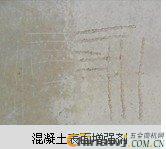Inadequate concrete strength can lead to a variety of performance issues, including reduced impermeability, lower durability, and most importantly, a decrease in the structural load-bearing capacity. The main effects are typically seen in three key areas:
1. **Reduced structural strength**: This directly affects the overall stability and safety of the building or structure.
2. **Poor crack resistance**: This leads to the formation of numerous wide cracks, which not only look unattractive but also compromise the integrity of the structure.
3. **Excessive deformation**: When deformation becomes significant, it can interfere with the normal use of the structure, potentially causing long-term damage.
**Causes of insufficient strength:**
- **Low-quality raw materials**:
(1) Poor cement quality: This may result in low actual activity or poor stability of the cement.
(2) Substandard aggregates (sand and stone): This includes low stone strength, poor volume stability, undesirable shape, and high levels of impurities like dust, mica, or organic matter.
(3) Poor water quality used in mixing.
(4) Low-quality admixtures or incorrect mix proportions.
- **Improper concrete mix design**:
The mix ratio is a critical factor that determines the final strength of the concrete. The water-cement ratio has a direct impact on strength, while other factors such as water content, sand ratio, and aggregate proportion also play a role. Common issues include:
(1) Excessive water usage due to inaccurate measurement or failure to account for moisture in aggregates.
(2) Arbitrary changes to the mix ratio without proper justification.
(3) Inaccurate dosing of admixtures.
(4) Improper use of chemical additives.
(5) Insufficient quantity of sand, gravel, or cement being used.
- **Incorrect construction processes**:
(1) Poor mixing, either too short or too long, leading to an uneven mixture.
(2) Loss of cement slurry during pouring, resulting in false or premature setting.
(3) Inadequate curing conditions, such as early drying, lack of water, or freezing.
- **Improper testing procedures**:
Test blocks may not be properly cured or prepared according to standard guidelines, leading to unreliable strength measurements.
**Remediation and treatment options** for low concrete strength include:
- Measuring the actual strength through testing.
- Using late-strength data for assessment.
- Reducing structural loads where possible.
- Reinforcing the structure through additional supports or materials.
- Conducting structural analysis and calculations.
- In severe cases, demolition and reconstruction may be necessary.


Led Lawn Light,Multi-Function Led Lawn Lamp,Outdoor Led Lawn Lamp,Waterproof Led Lawn Lamp
Yangzhou Langxu Lighting Technology Co., Ltd , https://www.street-lighting.com